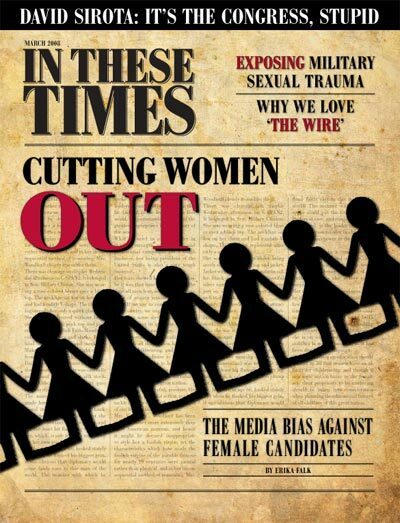Dr. Nancy Nielsen’s résumé is exhaustive. Currently a clinical professor of medicine and senior associate dean for medical education at the University of Buffalo School of Medicine and Biomedical Sciences, Nielsen has worked for the New York State Department of Health and has held various leadership positions in the American Medical Association (AMA). So it’s not surprising that the AMA voted her president-elect last June, only the second woman to hold the post. Yet other jobs on Nielsen’s résumé have alarmed some progressive healthcare advocates.
From October 2004 to July 2007, Nielsen served as chief medical officer of Independent Health Association, a Buffalo-based HMO. Although AMA spokesperson Brenda Crane notes that Nielsen ended her affiliation with Independent Health upon receiving her promotion at the AMA, her tenure raises flags for Geri Jenkins, president of the California Nurses Association, a healthcare union.
“I think you have a conflict when you have someone in that position who’s worked for an insurance company and is also a physician who’s going to run the AMA,” Jenkins says.
Since 1996, Nielsen has also sat on the board of the Medical Liability Mutual Insurance Company, one of the country’s largest medical liability carriers. While some Republicans have embraced medical malpractice reform as a virtual cure-all for America’s healthcare crisis, critics contend that putting caps on non-economic damages provides unjustified protections for hospitals, HMOs and insurance companies, another potential conflict of interest.
In a vacuum, Nielsen’s professional relationships might be considered inconsequential. But the AMA has a long history of thwarting progressive healthcare reform, which amplifies the importance of her connection to the insurance industry.
As early as the 1930s, then-AMA President Dr. Morris Fishbein wrote that a national healthcare program would cause “a weakening of national caliber,” and signal “a definite step toward either communism or totalitarianism.” When, in 1948, President Harry Truman called for the creation of a government-run national health insurance fund, the AMA characterized the bill as “socialized medicine” and campaigned against it.
Next came the 1961 battle over Medicare that pitted the Kennedy administration against a recently hired General Electric public-relations flak named Ronald Reagan. The future president recorded an LP titled “Ronald Reagan Speaks Out Against Socialized Medicine” that the AMA distributed to housewives across the country. “Operation Coffee Cup” architects suggested that women organize small gatherings, brew some java and listen to the dangers that a national healthcare system would invariably pose.
During the Clinton years, the AMA was active in the coalition that beat back “Hillarycare” – the Democrats’ last attempt at major healthcare reform.
In August, the AMA launched a $15 million advertising campaign that focused on the problems of the uninsured, hoping to persuade voters to cast their ballots in 2008 with the issue in mind. But this project has frustrated reformers, who contend that the organization’s approach to achieving universal care – providing tax breaks and vouchers for those lacking coverage so they can purchase affordable plans – is too timid.
“At best … the AMA is advocating a completely unproven method of achieving their ends and ignoring things that we know will work,” says Dr. Stephanie Woolhandler, co-founder of Physicians for a National Health Program.
Given these realities, many doctors are turning their backs on the AMA. The medical news service MedPage Today estimated that the AMA represented only 15 percent of practicing U.S. physicians in 2005, down from 70 percent during the 1961 Medicare fight.
“A lot of younger doctors,” says Jenkins, “have gone into other groups and organizations because they haven’t always been happy with how the AMA is run and what they do.”
States like Minnesota and Massachusetts show majority support among physicians for a single-payer system, and the American College of Physicians – America’s second-largest physician group – endorsed such a proposal in December.
That’s made no difference to the AMA.
“The AMA has stuck with this position of vehemently opposing national health insurance,” says Woolhandler, “despite a major shift in the physician community in terms of opinion.”
With Nielsen at the helm, the AMA’s intransigence seems likely to continue.






